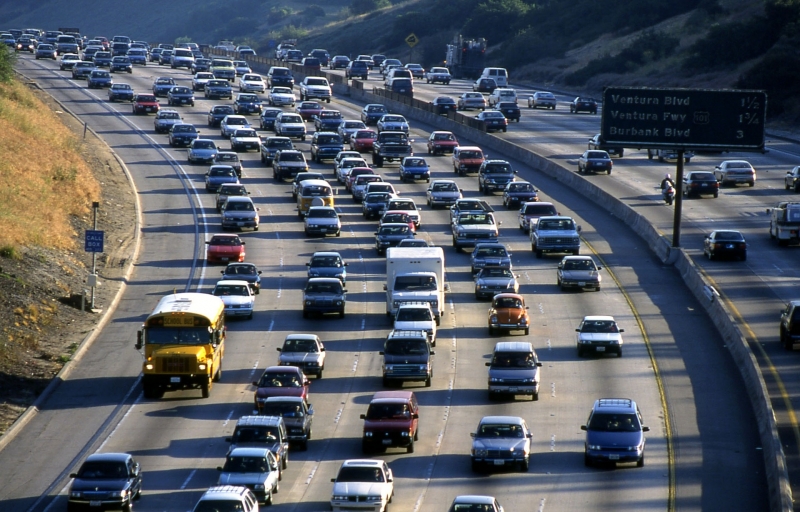California is often considered a leader in environmental issues and has made strides to become a more environmentally conscious state. Through state and local policies, the state has banned certain plastic products, such as bags and straws, and in 2011 it implemented a Low Carbon Fuel Standard (LCFS) program to curb greenhouse gas pollution. The California Air Resources Board (CARB) implemented this cap-and-trade program to ensure that automakers gradually increase gas mileage on their vehicles and reduce carbon intensity 10 percent by 2020. The state has even sought to extend the LCFS program, with a new goal of 20 percent reduction by 2030. These standards are stricter than the nationwide fuel standards, and while the initiative has received some legal pushback from the agricultural and ethanol industries, even companies in the transportation sector have become accustomed to California’s standards.
California has enjoyed the ability to tackle its own carbon pollution for several years. Now, however, their fuel standards are in danger.
On August 2, the U.S. Environmental Protection Agency (EPA) and National Highway Traffic Safety Administration (NHTSA) announced their plan to strip the state of its LCFS program for several years, bringing California to the same emission standards as the rest of the country. This plan would freeze California’s targeted emissions reductions for 2020-2026, rolling back Obama-era regulations and disrupting California’s efforts to decrease carbon pollution from the transportation sector. The federal government justifies this action in three major ways: (1) California’s current fuel standards interfere with highway safety; (2) stricter standards increase vehicle prices, making it more difficult for people to afford cars with better safety features; and (3) there is no reason for California to have separate standards if national standards are on track for mitigating climate change. California argues that the Clean Air Act (CAA) gives it the right to maintain stricter standards, but the federal government claims that the CAA should not apply to state emission standards. The Trump Administration acknowledges that freezing California’s LCFS program would come at the cost of public health and environmental well-being, but it stresses that “more realistic standards" will do a better job of balancing safety concerns and carbon emissions reductions.
 Unsurprisingly, this decision has angered many Californian officials. The state recently railed against the Administration’s position, calling it “misguided,” “flawed,” and downright “illegal.” State officials further emphasize the environmental and health implications of this decision. They question the methods through which EPA and NHTSA came to theirs conclusion, as many scientists and environmental advocates support extensive research conducted during the Obama Administration that found no compromise to safety with reduced emissions. Even automakers are hesitant about the rollback, acknowledging the need for cleaner emissions moving forward.
Unsurprisingly, this decision has angered many Californian officials. The state recently railed against the Administration’s position, calling it “misguided,” “flawed,” and downright “illegal.” State officials further emphasize the environmental and health implications of this decision. They question the methods through which EPA and NHTSA came to theirs conclusion, as many scientists and environmental advocates support extensive research conducted during the Obama Administration that found no compromise to safety with reduced emissions. Even automakers are hesitant about the rollback, acknowledging the need for cleaner emissions moving forward.
But, California’s disagreement with the Administration’s approach to fuel standards did not begin with EPA’s and NHTSA’s decision in August. On April 13, 2018, EPA determined that greenhouse gas emission standards for model year 2022-2025 light-duty vehicles may be “too stringent” and announced it would initiate a notice-and-comment rulemaking to further consider appropriate standards. Then, in May, California and 17 other states filed suit against EPA, arguing this was arbitrary and in violation of the CAA. Now, with California officials implying the possibility of similar legal action in support of its LCFS program, questions arise about the potential outcomes of this dispute. Is California legally permitted to have different emission standards, even when those standards are already well within the national standards? Does the federal government truly have the authority to overrule California’s LCFS program and enforce compliance with national standards? What precedent does this set in terms of federal versus state interests in environmental mitigation for the future?
ELI and Farella Braun + Martel will hold a Breaking News webinar on November 16 to discuss these questions, explore the actions leading to this dispute, and consider potential impacts moving forward. Expert panelists representing NGOs, governments, and private, academic, and corporate entities will address the provisions in the CAA that allow California to set different emissions standards, the nature of California’s LCFS program, and possible avenues and outcomes of this evolving situation.
Note: This webinar was originally scheduled for November 16 but has been rescheduled to December 6, 11:30AM-1:00PM Pacific Standard Time. Please register by December 3. This event is open to the public, but there is a $25 fee for non-ELI members.
For event details and RSVP information, click here: Breaking News: The Uncertain Future of California's Vehicle Emission Standards.
